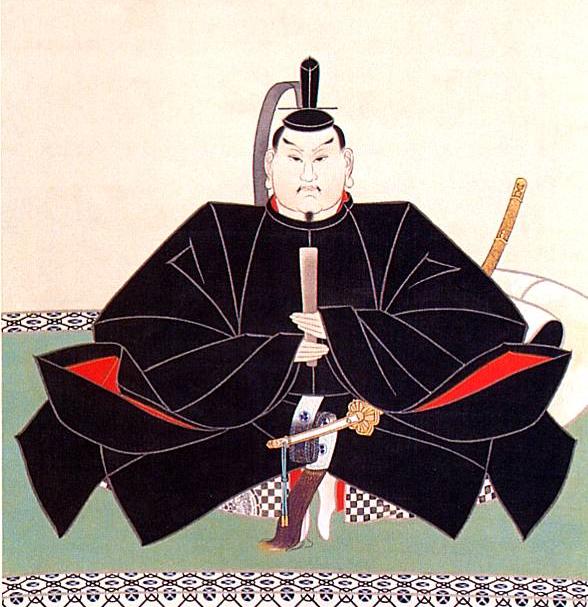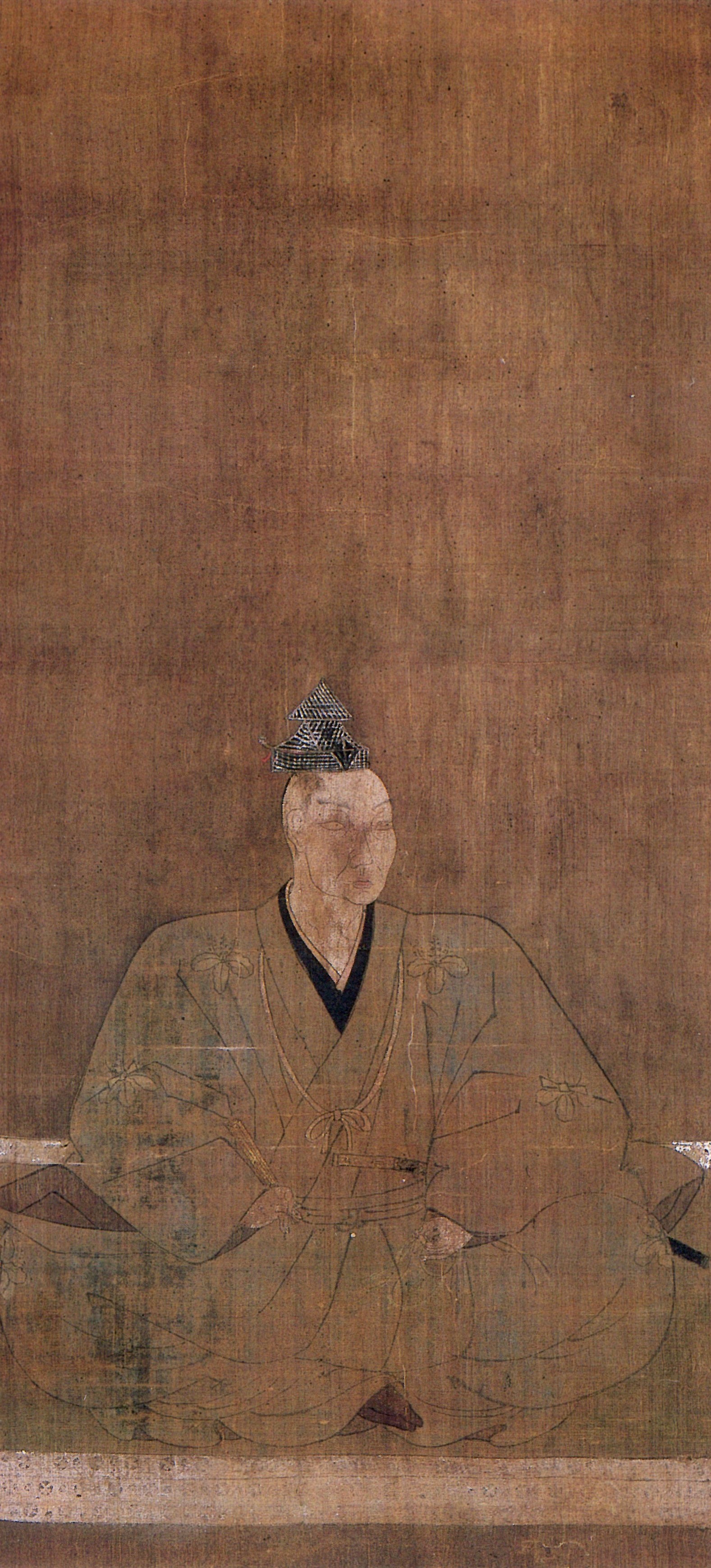|
Tokugawa Yorinobu
was a Japanese ''daimyō'' of the early Edo period. Born under the name Nagatomimaru (長福丸), he was the 10th son of Tokugawa Ieyasu, by his concubine Kageyama-dono. On December 8, 1603, Yorinobu received the fief of Mito, then rated at 200,000 ''koku'', as his fief. Mito had formerly belonged to his older brother, Takeda Nobuyoshi. Following his stipend increase to 250,000 ''koku'' in October 1604, he came of age on September 12, 1606, taking the name Yorimasa, and receiving the court rank of junior 4th, lower grade (''ju-shi-i-ge'') and the title of ''Hitachi no Suke''. On January 6, 1610, he was transferred to a 500,000 ''koku'' fief in Suruga and Tōtōmi Provinces (thereby founding Sunpu Domain centered on Sunpu Castle), and took the name Yorinobu. However, after a little under a decade in Suruga, he was transferred to the 550,000 ''koku'' Wakayama Domain on August 27, 1619, following the transfer of the previous rulers, the Asano clan, to Hiroshima, in Aki Province. Y ... [...More Info...] [...Related Items...] OR: [Wikipedia] [Google] [Baidu] |
Tokugawa Yorinobu
was a Japanese ''daimyō'' of the early Edo period. Born under the name Nagatomimaru (長福丸), he was the 10th son of Tokugawa Ieyasu, by his concubine Kageyama-dono. On December 8, 1603, Yorinobu received the fief of Mito, then rated at 200,000 ''koku'', as his fief. Mito had formerly belonged to his older brother, Takeda Nobuyoshi. Following his stipend increase to 250,000 ''koku'' in October 1604, he came of age on September 12, 1606, taking the name Yorimasa, and receiving the court rank of junior 4th, lower grade (''ju-shi-i-ge'') and the title of ''Hitachi no Suke''. On January 6, 1610, he was transferred to a 500,000 ''koku'' fief in Suruga and Tōtōmi Provinces (thereby founding Sunpu Domain centered on Sunpu Castle), and took the name Yorinobu. However, after a little under a decade in Suruga, he was transferred to the 550,000 ''koku'' Wakayama Domain on August 27, 1619, following the transfer of the previous rulers, the Asano clan, to Hiroshima, in Aki Province. Y ... [...More Info...] [...Related Items...] OR: [Wikipedia] [Google] [Baidu] |
Mizuno Tadamasa
(1493 – 22 August 1543) was a samurai lord of the Mizuno clan of feudal Japan. He was the father of Odai no Kata, the mother of ''shōgun'' Tokugawa Ieyasu. In 1533 by Mizuno Tadamasa built and ruled Kariya Castle. Tadamasa was also the father of Mizuno Nobumoto and Mizuno Tadashige. Literature *Sadler, AL: Shogun: The Life of Tokugawa Ieyasu . Tuttle Publishing, 1978. ISBN 978-4-8053-1042-7 . (In English) {{DEFAULTSORT:Mizuno, Tadamasa Mizuno Tadamasa Mizuno Tadamasa (1493 – 22 August 1543) was a samurai lord of the Mizuno clan of feudal Japan. He was the father of Odai no Kata, the mother of ''shōgun'' Tokugawa Ieyasu. In 1533 by Mizuno Tadamasa built and ruled Kariya Castle. Tadamasa was also the fat ... Samurai Mizuno clan Place of birth unknown Place of death missing Date of birth unknown ... [...More Info...] [...Related Items...] OR: [Wikipedia] [Google] [Baidu] |
Matsudaira Kiyoyasu
was the 7th lord over the Matsudaira clan during the Sengoku period (16th century) of Japan. Kiyoyasu was the grandfather of the third "great unifier of Japan", Tokugawa Ieyasu. Biography Kiyoyasu gained control of the whole of northern Mikawa Province after the Saigo clan surrendered following four generations of conflict. Okazaki Castle was also built as a monument to the Matsudaira's power. Following this conquest, one of Kiyoyasu's retainers, Abe Masatoyo, began to resent Kiyoyasu. In 1535, Abe somehow entered Kiyoyasu's secret chambers and slew him with his Muramasa blade. Another version of Matsudaira Kiyoyasu's death has been told by the author A. L. Sadler:A. L. Sadler, ''The Maker of Modern Japan: The Life of Shogun Tokugawa Ieyasu'', Tuttle 1937, pp. 38–39. "Kiyoyasu, the son of Nobutada, was a fine soldier, and his friendship was solicited both by Takeda Nobutora, father of the great Shingen, and also by Oda Nobukatsu, son of the more famous Nobunaga. Oda l ... [...More Info...] [...Related Items...] OR: [Wikipedia] [Google] [Baidu] |
Matsudaira Hirotada
was the lord of Okazaki Castle in Mikawa province, Japan during the Sengoku Period of the 16th century. He is best known for being the father of Tokugawa Ieyasu, founder of the Tokugawa Shogunate. Biography Hirotada was the son of Matsudaira Kiyoyasu (seventh head of the Mikawa Matsudaira clan). He was known in his childhood as Senshōmaru, Senchiyo, and Jirōzaburō. After his father's assassination in 1535, Hirotada was placed under the protection of a loyal retainer, Abe Sadayoshi. He allied with the Imagawa, and with their help was installed at Okazaki castle. The alliance with them brought him into conflict with the Oda clan. In 1540, Oda Nobuhide attacked and took Anjō castle, which was held by the Matsudaira family. Hirotada was assisted by Mizuno Tadamasa. After took Anji castle, Oda Nobuhide's son, Oda Nobuhiro, was installed as the lord of the castle. In 1541, Hirotada married Mizuno Tadamasa's daughter, Okichi. A son, was born to them a year later, Matsudaira T ... [...More Info...] [...Related Items...] OR: [Wikipedia] [Google] [Baidu] |
Tokugawa Shogunate
The Tokugawa shogunate (, Japanese 徳川幕府 ''Tokugawa bakufu''), also known as the , was the military government of Japan during the Edo period from 1603 to 1868. Nussbaum, Louis-Frédéric. (2005)"''Tokugawa-jidai''"in ''Japan Encyclopedia'', p. 978.Nussbaum"''Edo-jidai''"at p. 167. The Tokugawa shogunate was established by Tokugawa Ieyasu after victory at the Battle of Sekigahara, ending the civil wars of the Sengoku period following the collapse of the Ashikaga shogunate. Ieyasu became the ''shōgun,'' and the Tokugawa clan governed Japan from Edo Castle in the eastern city of Edo (Tokyo) along with the ''daimyō'' lords of the ''samurai'' class.Nussbaum"Tokugawa"at p. 976. The Tokugawa shogunate organized Japanese society under the strict Tokugawa class system and banned most foreigners under the isolationist policies of ''Sakoku'' to promote political stability. The Tokugawa shoguns governed Japan in a feudal system, with each ''daimyō'' administering a ''han'' (f ... [...More Info...] [...Related Items...] OR: [Wikipedia] [Google] [Baidu] |
Kishū Domain
, or , was a province of Japan in the part of Honshū that is today Wakayama Prefecture, as well as the southern part of Mie Prefecture. Nussbaum, Louis-Frédéric. (2005). "''Kii''" in . Kii bordered Ise, Izumi, Kawachi, Shima, and Yamato Provinces. The Kii Peninsula takes its name from this province. During the Edo period, the Kii branch of the Tokugawa clan had its castle at Wakayama. Its former ichinomiya shrine was Hinokuma Shrine. The Japanese bookshop chain Kinokuniya derives its name from the province. Historical districts * Wakayama Prefecture ** Ama District (海部郡) - merged with Nagusa District to become Kaisō District (海草郡) on April 1, 1896 ** Arida District (有田郡) ** Hidaka District (日高郡) ** Ito District (伊都郡) ** Naga District (那賀郡) - dissolved ** Nagusa District (名草郡) - merged with Ama District to become Kaisō District on April 1, 1896 * Mixed ** Muro District (牟婁郡) *** Higashimuro District (東牟婁郡) ... [...More Info...] [...Related Items...] OR: [Wikipedia] [Google] [Baidu] |
Yoshii Domain
was a feudal domain under the Tokugawa shogunate of Edo period Japan, located in Kōzuke Province (modern-day Gunma Prefecture), Japan. It was centered on Yoshii ''jin'ya'' in what is now part of the city of Takasaki, Gunma. Yoshii was ruled through much of its history by a branch of the Takatsukasa clan, which had adopted the patronym of Matsudaira. History After Tokugawa Ieyasu took control over the Kantō region in 1590, he assigned one of his generals, Sugawara Sadatoshi, the 20,000 ''koku'' holding of Yoshii. Sadatoshi laid out the foundations of a town and market, and was succeeded by his adopted son, Okudaira Tadamasa in 1602. Tadamasa’s mother was the eldest daughter of Tokugawa Ieyasu; he was transferred to Kanō Domain in 1610. The domain then became vacant and was ruled as a ''hatamoto'' holding until 1682. In 1682, Hotta Masayasu, a hatamoto bureaucrat in the Tokugawa shogunate, passed the 10,000 ''koku'' mark and was raised in status to daimyō. Yoshii Domain w ... [...More Info...] [...Related Items...] OR: [Wikipedia] [Google] [Baidu] |





